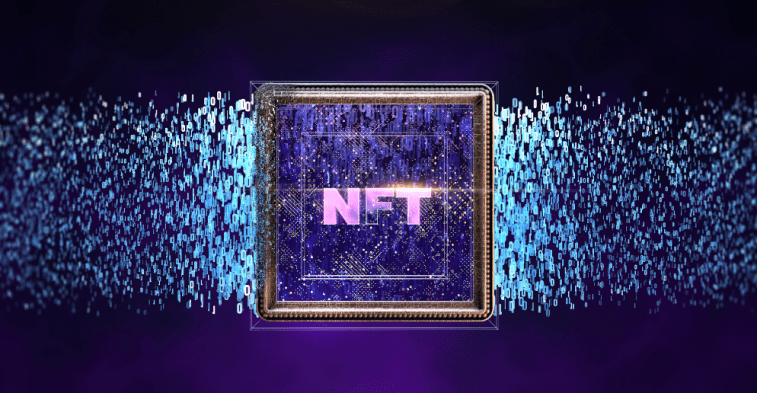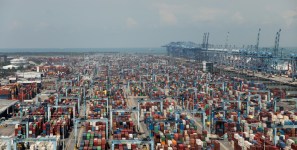DIGITIZATION’S NEXT FRONTIER: NON-FUNGIBLE TOKENS ARE A GAME CHANGER FOR TRADE FINANCE
Trade finance is known for its stubbornness in the face of change. Even as the world has gone digital, paper-based manual processes remain commonplace across the complex network of counterparties involved in financing global trade. Thankfully, the tide is now turning. To digitize or not digitize is no longer the question–it’s now a case of “when,” not “if.”
The operational challenges of relying on manual processes and systems are well known and much maligned across the industry–incorrect documentation and KYC, non-interoperable systems, manual reconciliation, poor visibility, excessive costs, to name just a few.
Digital solutions have emerged in many different shapes and sizes, but one of the technologies which seems most encouraging is enterprise blockchain. Trade is a fundamentally decentralized system. The industry is heavily intermediated–predominantly by banks that help to facilitate transactions and provide the financing behind them, but also by insurers, customs officials and other market participants. Firms have tried countless times to apply centralized solutions to this decentralized system but, unsurprisingly, none have really worked.
The decentralized nature of blockchain makes it a perfect fit for trade finance. For the first time, the entire industry is getting behind a technology and moving it into real world deployment at a record pace. The architecture underpinning the entire ecosystem of trade is undergoing complete digital transformation, and exciting new blockchain-enabled developments continue to emerge. One such development is non-fungible tokens, or NFTs. But what are they and how do they benefit participants?
WHAT IS AN NFT?
A non-fungible token is a unique and non-interchangeable unit of data stored on a digital ledger. NFTs use blockchain technology to provide a public proof of ownership. You’ve probably heard of NFTs in the entertainment industry, largely because they can be associated as unique items with easily reproducible items such as photos, videos, audio and other types of digital files. But they also have wide applicability in the financial services space–and specifically in trade finance.
It’s important to note that an NFT is simply a specific type of tokenization. Once a trade finance document or obligation has been tokenized, it can be referred to as an NFT. By contrast, a smart contract is a digital contract, stored on blockchain, which will execute once specified conditions are met. In the case of trade finance asset distribution, both smart contracts and tokenization work together to facilitate this activity.
WHAT ARE THE BENEFITS OF NFTs IN TRADE FINANCE?
In reality, NFTs for trade finance have been around for some time, though we’ve only just begun to describe them this way. You could think of trade finance as a practical implementation of the NFTs in the news today. Marco Polo is one such platform which already tokenizes payment obligations and invoices.
Storing ownership data on blockchain reduces the costs and complications of paperwork that is otherwise required to verify the process. This is no small feat when you consider many of the processes and technologies underpinning trade finance have not been modernized in decades.
Take, for example, invoice financing. While a common activity, managing invoice payments and terms can be slow and inefficient for companies and their trading partners. They must navigate different currencies and jurisdictions, each with unique requirements in terms of contract terms and payments.
By digitizing these manual processes and storing the data as an NFT, a technology such as blockchain has a real impact on reducing the costs, risks and delays to participants involved in trade finance.
MAKING TRADE FINANCE MORE ACCESSIBLE TO SMEs
It is complicated and legally difficult to provide an optimal level of credit support to small companies. Nearly $1.5 trillion of demand for trade finance is rejected by banks, according to the Asian Development Bank, with 60% of banks expecting this figure to increase over the next two years. SMEs in developing markets that rely heavily on access to trade can be severely hindered through these outdated processes.
Tokenizing the payment guarantee of the final buyer can make it easier to provide this support, but there are important caveats to this. While tokenizing payment guarantees makes it cheaper and easier to execute credit support, there is no guarantee that these processes will then be used to extend supply chain financing through to the long tail of suppliers. It certainly could be used in this way, but it also might not be. This needs to be adopted at the industry level as suppliers would need to pass the NFT onto their own suppliers in turn for the tokenization of payment guarantees to truly be effective.
Although tokenizing the payment guarantee of the final buyer is a frequently mentioned use case, NFTs can also be used to digitize invoices for factoring, for example. Asset originators can tokenize invoices which can then be financed. This could be a very helpful step in enabling small companies to access the financing they need to grow trade.
EXPANDING THE TRADE ASSET ECOSYSTEM
Beyond their immediate benefits to banks and trading businesses, NFTs can also enable institutional investors to expand their activity in trade finance assets. These assets have historically struggled to scale for well-known reasons: investors find them complicated, there aren’t trusted quantitative benchmarks available and there often isn’t the necessary infrastructure to process them properly. Tokenizing trade finance receivables and payment obligations can simplify the process of asset transfer and solve one of these challenges, thus contributing to the scaling of trade finance assets.
Interest in trade finance as an asset class has grown over the past couple of years for reasons unrelated to NFTs. NFTs, as we think of them today, are relatively new and tend to be associated with digital content rather than physical goods. This framework suits trade finance assets because while they are linked to physical assets, the securities themselves are digital.
Programmable contracts used in combination with NFTs have shown great promise in tackling the problem of trade finance asset distribution. The use of the two functionalities together has promise as a way to support the building momentum around trade finance as an asset class.
OLD MEETS NEW
In order to get the most out of NFTs and blockchain for trade finance–like any nascent technology–they must be used alongside existing systems. In reality, most businesses will continue to use their long-standing legacy systems throughout this transition to a fully digitized space.
It is crucial, therefore, that disruption is kept to a minimum. NFTs and enterprise blockchain platforms should be viewed as a means of supporting and improving current processes, rather than replacing them. In other words, integration is the single most important factor in helping this industry to keep up with the rapidly digitizing world around it.
_______________________________________________________________

As head of Trade and Supply Chain at R3, a Dublin, Ireland-headquartered enterprise technology and services provider with offices around the world, Alisa DiCaprio is responsible for trade strategy, standards and governance design. She was previously a senior economist at the Asian Development Bank and holds a doctorate from MIT.





Leave a Reply